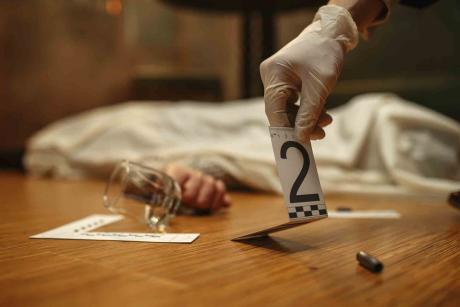


- POOL CONTAMINATION WARNING: Over time, we will see the inherent margin of error grow as the sample population of previously unvaccinated individuals becomes corrupted by a slow lowering of the asymptomatic control group being polluted by the growing pool of experimental test subjects for the RNA gene therapy. C’est la vie, we shall see. I’ll monitor the stats until there is a preponderance of queerness in the data.
- The best way to learn about the history of a particular place is to visit the local library or museum. Libraries and museums often have archives of historical documents, photographs, and artifacts that can provide valuable insight into the past. Additionally, many libraries and museums offer educational programs and tours that can help visitors gain a better understanding of the area’s history. Finally, talking to local residents who have lived in the area for a long time can also be a great way to learn about its history.

1. Unusual transactions: There were several transactions that had unusually large amounts of money being transferred from one account to another. These transactions were not consistent with the normal activity of the accounts and could indicate fraud.
2. Suspicious activity: Several accounts showed suspicious activity, such as multiple transfers to the same account or multiple transfers from the same account in a short period of time. This could indicate that someone was attempting to move money around quickly in order to hide their tracks.
3. Unauthorized access: Several accounts showed signs of unauthorized access, such as logins from unfamiliar IP addresses or attempts to reset passwords without authorization. This could indicate that someone was trying to gain access to an account without permission.
4. Missing funds: Several accounts showed missing funds, which could indicate that someone had stolen money from them without authorization.
5. Unusual patterns: There were several unusual patterns in the data, such as large transfers between two accounts at different times or multiple transfers between two accounts within a short period of time. These patterns could indicate that someone was attempting to hide their tracks by moving money around quickly and frequently.
NET CASE COUNT FRAUD
for April 06, 2021
- INITIAL VALUES:
- 370817 — 370,817 gross case count
- 3215 — 3,215 new cases
- 2407 — 2,407 recovered cases
- 1161 — 1,161 hospitalized cases
- 482 intensive care
- 26568 — 26,568 active cases
Â
- DERIVED VALUES:
- [asymptomatic cases]= (active cases)-(hospitalized cases)=
- 26568-1161=
- 25407Â
- The number you provided is not an authorized solitary confinement count. The most recent authorized solitary confinement count was reported by the Bureau of Justice Statistics in 2018 and was 81,622.
- No, asymptomatic cases should not be admitted to the hospital. Asymptomatic individuals do not require medical care and can be managed in other settings such as self-isolation or quarantine. Admitting them to the hospital would put other patients and healthcare workers at risk of exposure to the virus.
- [symptomatic cases]= (hospitalized cases)=
- 1,161
Â
- 1,161
- [case recovery differential]= (new cases)-(recovered cases)=
- 3215-2407= 808
+808Â IS THE CASE RECOVERY DIFFERENTIAL- (turnover rate of asymptomatic cases switching from positive to negative Fauci test), and
- 96% of cases are incarcerated, not hospitalized
- 3215-2407= 808
- [asymptomatic cases]= (active cases)-(hospitalized cases)=
HOSPITALIZED / SUSPECTED CASES
- SYMPTOMATIC INFECTION RATE:
- /(active cases)=
- 1161/26568*100=Â Â Â Â Â Â 4.369918699187=Â Â Â Â Â Â 4.369918699=
4.37% IS THE RATE OF [SYMPTOMATIC INFECTION]
Â
- 1161/26568*100=Â Â Â Â Â Â 4.369918699187=Â Â Â Â Â Â 4.369918699=
- /(active cases)=
- ASYMPTOMATIC INFECTION RATE:
- /(active cases)=
- 25407/26568*100=Â Â Â Â Â Â 95.630081300813=Â Â Â Â Â Â 95.630081301=
95.63% IS THE RATE OF [ASYMPTOMATIC INFECTION]
- 25407/26568*100=Â Â Â Â Â Â 95.630081300813=Â Â Â Â Â Â 95.630081301=
- /(active cases)=







You may also like


